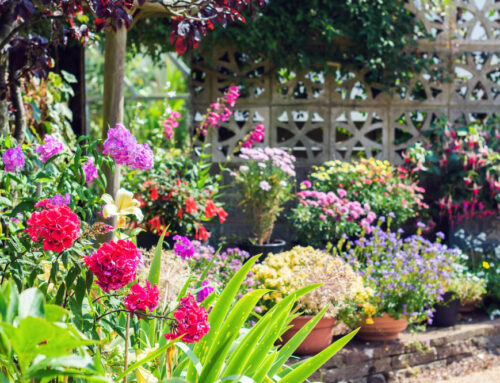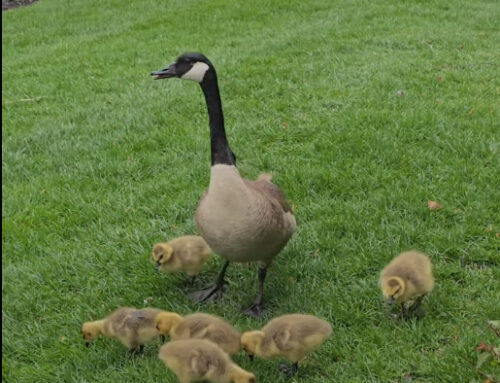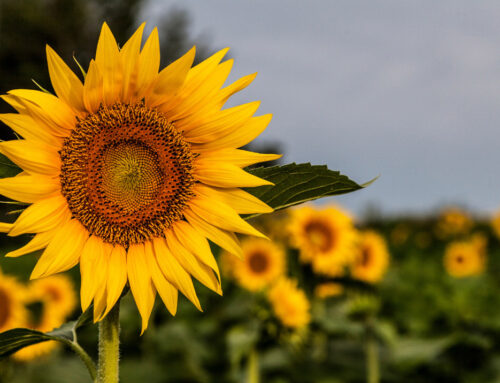As nature lovers and gardeners, we love our trees. They give us sustenance, shade, and beauty. Currently, it is estimated that there are over 70,000 tree species on earth. However, it is thought that nearly 9,000 more species have yet to be discovered. Here are a few more trivia facts about our beloved woodland friends:
Trees
Oldest Tree: The Methuselah tree, a bristlecone pine in California’s White Mountains, is estimated to be over 4,800 years old, making it one of the oldest known living organisms on Earth.

Tallest Tree: Hyperion, a coast redwood (Sequoia sempervirens) in California’s Redwood National Park, stands at a staggering height of 379 feet making it the tallest tree in the world.

Widest Tree Trunk: The record is currently held by the Árbol del Tule, a Montezuma cypress, with a diameter of about 38.1 feet, located in Oaxaca, Mexico.

Largest Tree by Volume: General Sherman, a giant sequoia in California’s Sequoia National Park, holds the title for the largest tree by volume, with an estimated trunk volume of over 52,500 cubic feet.

Tree Planting Records: The Guinness World Record for the most trees planted in a single day by a team is held by India, with over 50 million trees planted on July 11, 2016, as part of a nationwide reforestation campaign.

Tree Rings: Trees form annual rings in their trunks, which can be used to determine their age and to study past environmental conditions.

Tree Resins: Some trees produce resin, a sticky substance that seals wounds and protects against pathogens. Fossilized resin, known as amber, can preserve ancient organisms and provide valuable insights into prehistoric ecosystems.

Talking Trees: Trees communicate with each other through underground networks of fungi called mycorrhizae, exchanging nutrients, water, and chemical signals.

Rainforest Diversity: Tropical rainforests are home to more than half of the world’s plant and animal species, with trees playing a crucial role in maintaining global biodiversity.

Deciduous vs. Coniferous Trees: Deciduous trees and coniferous trees are the two main categories of trees distinguished primarily by their foliage and reproductive structures. Deciduous Trees: Have leaves that change color and fall off in the autumn season, typically in response to changes in temperature and daylight hours. Examples of deciduous trees include oak, maple, birch, beech, and cherry trees.

Coniferous Trees: Have needle-like or scale-like leaves that are typically evergreen, meaning they remain on the tree year-round. These leaves help conifers conserve water and withstand harsh environmental conditions. Examples include pine, spruce, fir, cedar, and cypress trees.

 Aromatherapy and Trees:
Aromatherapy and Trees:
Many trees, such as eucalyptus and pine, emit aromatic compounds called terpenes, which can have therapeutic effects and contribute to the characteristic scents of forests. Other trees known for their wonderful smells include:
Lilac: Lilac trees are known for their fragrant clusters of flowers that bloom in spring, filling the air with a sweet, floral scent.
Magnolia: Magnolia trees produce large, showy flowers with a sweet, citrusy fragrance that can perfume the air, particularly in the spring and early summer.
Cedar: Cedar trees, particularly the Eastern Red Cedar, have aromatic wood and foliage that emits a distinctive, woody scent, often used in perfumes and aromatherapy.
Citrus Trees: Citrus trees such as lemon, orange, and lime produce fragrant blossoms that fill the air with a sweet, citrusy scent, especially in the spring.
Jasmine: Jasmine trees produce small, white flowers with an intensely sweet and floral fragrance, often used in perfumes and teas.
Cherry: Cherry trees, particularly ornamental varieties like the Yoshino Cherry produce fragrant blossoms in early spring, with a subtle almond-like scent.
Rose: While technically shrubs, rose bushes are often grown as small trees and produce highly fragrant flowers with a wide range of scents, from sweet and floral to spicy and musky.
Katsura: The Katsura tree is a gorgeous tree often planted not only for its beautiful golden color in the Fall, but also for the unique and pleasant fragrance of its leaves which smell like cotton candy or burnt sugar. The Katsura tree’s fragrant leaves are particularly noticeable when the leaves begin to fall to the ground in autumn.
 Medicinal Trees:
Medicinal Trees:
Over the centuries, thousands of trees have medicinal properties, with compounds derived from their bark, leaves, or sap used in traditional and modern medicine to treat various ailments. Here are just a few:
Willow The bark of willow trees contains salicin, a compound similar to aspirin, which has been used for centuries to relieve pain and reduce fever.
Eucalyptus: Eucalyptus leaves contain essential oils with antiseptic properties that are commonly used in inhalants and chest rubs to relieve congestion and coughs.
Neem: Neem trees are highly valued in traditional medicine for their antibacterial, antifungal, and antiviral properties. Various parts of the neem tree, including the leaves, bark, and seeds, are used for treating a range of ailments.
Tea: Tea tree oil, derived from the leaves of the tea tree, has antimicrobial and anti-inflammatory properties and is used to treat skin conditions such as acne, fungal infections, and insect bites.
Cinnamon: Cinnamon trees produce bark that is used both as a spice and in traditional medicine. Cinnamon has been studied for its potential benefits in managing blood sugar levels and improving cardiovascular health.
Cinchona: The bark of cinchona trees contains quinine, which is used to treat malaria.
Pacific Yew: Taxol, a chemotherapy medication used to treat various cancers, is derived from the bark of the Pacific Yew tree.
Birch: Birch bark contains betulin and betulinic acid, which have anti-inflammatory and antiviral properties and are used in skincare products.
Baobab: Various parts of the baobab tree are used in traditional medicine across Africa for treating conditions such as diarrhea, fever, and microbial infections.
Camphor Tree: Camphor, derived from the wood of the camphor tree, is used topically to relieve pain and itching and is also used in aromatherapy.
 A Toxic Relationship:
A Toxic Relationship:
While many trees offer health and medicinal benefits and are integral to ecosystems, some can be toxic or harmful if ingested or touched. Be cautious around these woody wonders:
Manchineel Tree: Often called “the world’s most dangerous tree,” the manchineel tree produces sap containing potent toxins. Even touching the tree can cause severe dermatitis, and ingesting its fruit can be fatal.
Laburnum The seeds and pods of laburnum trees contain cytisine, a toxic alkaloid that can cause nausea, vomiting, convulsions, and even death if ingested in large quantities, especially by children.
Yew: While the bark and leaves of yew trees contain compounds used in chemotherapy medications (such as Taxol), other parts of the tree are highly poisonous if ingested, causing symptoms like dizziness, difficulty breathing, and cardiac arrest.
Oleander: Oleander contains cardiac glycosides, which can cause severe cardiac symptoms if ingested, including arrhythmias and cardiac arrest. All parts of the plant are toxic.
Peach: The seeds and pits of peaches, along with other stone fruits like cherries and apricots, contain cyanogenic glycosides, which can release cyanide when metabolized. While the fruit itself is safe to eat, ingesting large quantities of the seeds or pits can be toxic.
Buckeye: The seeds, leaves, and bark of buckeye trees contain glycosides and saponins, which can cause symptoms like nausea, vomiting, paralysis, and even death if ingested in large quantities.
Black Locust: Native to North America, this tree is commonly planted as an ornamental tree and for erosion control. However, all parts of the tree contain toxic compounds called alkaloids, which can cause digestive upset, dizziness, weakness, and respiratory depression if ingested.
Mango: While the fruit of the mango tree is delicious and widely consumed around the world, the sap of the tree contains urushiol, the same compound found in poison ivy and poison oak. Contact with mango sap can cause skin irritations, rash, and blistering in susceptible individuals.
 Unique and Wonderful Trees:
Unique and Wonderful Trees:
Here are a few more unique and wonderful trees from around the world:
The Gingko Tree: These trees are often referred to as living fossils because they are the only living species of the division Ginkgophyta. It has remained virtually unchanged for over 200 million years. The leaves of Gingko trees turn a brilliant yellow in the Fall then drop all their leaves in one day, creating a stunning and spectacular effect.
The Metasequoia Tree: Another tree considered to be a living fossil, Metasequoia were once thought to be extinct. Fossil records suggested that Metasequoia trees existed during the Mesozoic Era, over 65 million years ago. However, in 1941, living specimens were discovered in China, making it one of the most significant botanical discoveries of the 20th century. Unlike most conifers, which are evergreen, Metasequoia is deciduous. It sheds its needles in the fall, displaying vibrant colors of yellow, orange, and red before becoming dormant for the winter.
The Baobab Tree: Native to Madagascar and mainland Africa, Baobab trees are known for their swollen trunks that can store thousands of gallons of water. They are sometimes called “upside-down trees” because their branches resemble roots.
 Wild about Wildlife:
Wild about Wildlife:
Planting a variety of native trees that offer food, shelter, and nesting sites throughout the year can help create a diverse and thriving ecosystem which supports a wide range of wildlife species. Here are some of the best trees to plant for wildlife and ecosystems:
Oak: Oaks are known for supporting a wide range of wildlife. Over 532 species of caterpillars thrive on oak trees, which in turn supports the nutrition of diverse bird populations. Oak trees offer dense foliage for shelter and nesting sites, and the acorns from oak trees provide food for numerous species of birds, mammals, and insects. On average, it takes an oak tree between 20 to 50 years to produce its first crop of acorns.
Willow: Willows provide valuable habitat for many bird species and insects. They attract pollinators with their catkins and offer foliage for caterpillars, which are essential food sources for birds and other wildlife.
Pine: Pine trees provide nesting sites and shelter for various bird species. They also produce seeds that are consumed by birds, squirrels, and other small mammals.
Hawthorn: Hawthorn trees produce berries that are attractive to birds, including thrushes, waxwings, and finches. The dense, thorny branches provide cover and nesting sites.
Dogwood: Dogwoods produce berries that are consumed by birds and small mammals. The shrubby growth habit of some dogwood species offers cover and nesting sites.
Birch: Birch trees support a variety of wildlife, including birds, insects, and mammals. Their seeds are eaten by birds, and their bark provides habitat for insects and nesting sites for cavity-nesting birds.
Cedar: Cedars provide cover and nesting sites for birds and small mammals. Their berries are a food source for birds, and their dense foliage offers protection from predators.
Maple: Maple trees attract birds and insects with their flowers and seeds. They provide habitats for cavity-nesting birds and offer shade and shelter for various wildlife species.
Alder: Alder trees support nitrogen-fixing bacteria in their roots, enriching the soil and supporting diverse plant communities. They provide habitats for birds, insects, and small mammals.
Cherry: Cherry trees produce fruits that are consumed by birds and mammals. They also provide nesting sites for birds and attract pollinators with their flowers.
Cottonwood: Cottonwood trees are a favorite with beavers who use the wood for making dams and building lodges. Also, large cavities found in dead or hollowed cottonwoods are preferred nesting and roosting sites for bears and bats.
Dead but not Forgotten: Unless it is a safety hazard, consider keeping a dead tree or snag on your property if possible. It can provide important habitats for cavity-nesting birds, beneficial insects, bats, and other small animals.
The next post will be about leaves, flowers, and…(wait for it) the sex life of plants.
Have a great day.








